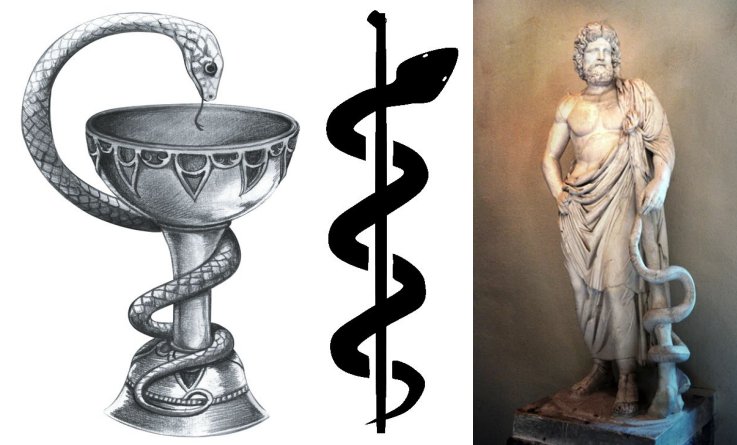Paris Point Zero And The Mysterious Statue Of Monsieur Legris
Ellen Lloyd - AncientPages.com - No one knows exactly when the statue first appeared in Paris, but it’s believed it was raised in pre-Roman times. Sometime during the 12th and 13th centuries, people started to call the statue “Monsieur Legris”, but the origin of the name remains a historical mystery. Bad weather and pollution turned the statue gray and perhaps this is the reason why the unknown man became known as monsieur Legris. In French, “le gris” means “gray” and the old statue did have a gray appearance.
Who built the statue of Monsieur Legris? Image credit: Wander Stories
Who was monsieur Legris really and why did someone build a statue of him such a long time ago? Was he an ancient god, a saint, an alchemist, a member of a secret society, or someone else? Obviously, whoever he was, he must have been of great importance to people. For as long as we can remember, monsieur Legris has pointed pilgrims their way to the Notre Dame Cathedral, and yet, his identity remains a mystery. Many have tried to unravel the mystery of monsieur Legris, but no one knows the truth and there are only theories attempting to explain who this enigmatic individual could have been.
Paris Point Zero Measures All Distances
There is an old saying that all roads lead to Rome, but if you visit Paris, you can find a small geographic marker from which all distances in France are measured from the exact center of Paris.
The place is called Paris Point Zero and it was laid in 1924. Despite its significance, many are unaware of its existence. Point Zero is just outside the Notre Dame Cathedral, one of many magnificent buildings in Paris. The Point Zero marker is neither very famous nor especially eye-catching, so it’s no surprise many have never heard of it. In fact, one can easily pass it without even noticing the octagonal brass plate in the paving stone.
Paris Zero Point. Credit: Public Domain, CC BY-SA 3.0
Today, Point Zero is associated with good luck. It’s believed that if you place a foot on the circle, you can have a wish fulfilled. Many couples stand here and kiss because they think the plate ensures eternal devotion and love. Another belief is that tourists who stand on the marker will return to Paris, which is a dream destination for many who visit Europe.
Who Was Mysterious Monsieur Legris?
Returning back to those days when monsieur Legriss was present here, and before the creation of the marker Zero Point, we learn that the statue standing on this particular spot was made in the image of a man holding a book and a snake. This has led some researchers to suggest the statue depicted the Greek God Asclepius. According to the Greek myths, Asclepius learned the art of healing from both his father Apollo and the centaur Cheiron. In time, he became so skilled in surgery and the use of drugs that he was revered as the founder of medicine.
The Rod of Asclepius, also known as the Staff of Asclepius, a serpent-entwined rod wielded by the Greek god Asclepius is today associated with medicine and health care. This is why a snake is a symbol of medicine, but it’s often confused with the staff of the god Hermes, the caduceus.
Other researchers and historians speculated monsieur Legris could have been Jesus, Guillaume de Paris, St. Geneviève, or the Roman God Terminus who protected boundary markers.
Left: Bowl of Hygieia. Middle: Rod Of Asclepius. Right: Greek God Asclepius - Credit: Public Domain
Another possibility is that that statue was somehow related to alchemists. During the Renaissance and the Reformation, Hermeticism played an important role in the Western world. Based on the writing of attributed to Hermes Trismegistus, many became interested in the religious, philosophical, and esoteric tradition.
Being treated as heretics by the Catholic Church, it was necessary for followers of Hermeticism to conceal their secret and divine knowledge using alchemy symbols and metaphors.
Could Monsieur Legris have been a depiction of Hermes Trismegistus, who the ancient Greeks identified with the Egyptian god Thoth? Maybe, this is the case, but it seems unlikely. In 1625, a fountain was built next to the statue. An inscription written in Latin on the statue read, translated: Approach those of you who are altered, and if by chance my waters are not enough, go to the temple and the goddess you invoke will prepare eternal waters for you.”
Who was this mentioned goddess? Could it have been Virgin Mary or was it just a reminder to Christians that they should pray and fast?
We may never the truth behind the statue of Monsieur Legris and his identity remains a secret. In 1748, his statue was destroyed and removed because there was a need to enlarge the square. Instead, the Point Zero marker was placed on the same spot.
Updated on June 12, 2022
Written by Ellen Lloyd – AncientPages.com
Copyright © AncientPages.com All rights reserved. This material may not be published, broadcast, rewritten or redistributed in whole or part without the express written permission of AncientPages.com
Expand for referencesMore From Ancient Pages
-
 Gonzalo Guerrero – The Renegade Who Joined The Maya Against His Own People
Featured Stories | Feb 27, 2020
Gonzalo Guerrero – The Renegade Who Joined The Maya Against His Own People
Featured Stories | Feb 27, 2020 -
 Skull From Broken Hill, Zambia Is Relatively Young – New Analysis Shows
Fossils | Apr 2, 2020
Skull From Broken Hill, Zambia Is Relatively Young – New Analysis Shows
Fossils | Apr 2, 2020 -
 Little Known History Of Amazon’s Ashaninka People Studied By Researchers
Archaeology | Mar 21, 2023
Little Known History Of Amazon’s Ashaninka People Studied By Researchers
Archaeology | Mar 21, 2023 -
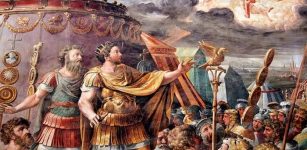 How The Strange Dream Of Roman Emperor Constantine Changed History
Ancient History Facts | Sep 29, 2017
How The Strange Dream Of Roman Emperor Constantine Changed History
Ancient History Facts | Sep 29, 2017 -
 Ancient Human Remains Buried In Spanish Caves Were Subsequently Manipulated And Utilized
Archaeology | Sep 21, 2023
Ancient Human Remains Buried In Spanish Caves Were Subsequently Manipulated And Utilized
Archaeology | Sep 21, 2023 -
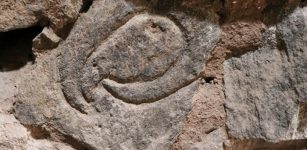 3,500-Year-Old Neo-Hittite Hieroglyphs Found In Cappadocia
Archaeology | May 27, 2019
3,500-Year-Old Neo-Hittite Hieroglyphs Found In Cappadocia
Archaeology | May 27, 2019 -
 Ancient Nandivardhan Was The City Of Vakataka Rulers Who Built Ajanta Caves
Archaeology | Jun 13, 2018
Ancient Nandivardhan Was The City Of Vakataka Rulers Who Built Ajanta Caves
Archaeology | Jun 13, 2018 -
 Lachit Bhorphukan: Hero From Assam Among Famous Warriors Who Stopped Mughals From Conquering Northeast India
Featured Stories | Dec 28, 2016
Lachit Bhorphukan: Hero From Assam Among Famous Warriors Who Stopped Mughals From Conquering Northeast India
Featured Stories | Dec 28, 2016 -
 Major Archaeological Discovery Of A 7,000-Year-Old Settlement In Miami – But Its Future Is In Danger
Archaeology | Feb 10, 2023
Major Archaeological Discovery Of A 7,000-Year-Old Settlement In Miami – But Its Future Is In Danger
Archaeology | Feb 10, 2023 -
 On This Day In History: Mysterious Death Of White Queen Anne Neville – On Mar 16, 1485
News | Mar 16, 2017
On This Day In History: Mysterious Death Of White Queen Anne Neville – On Mar 16, 1485
News | Mar 16, 2017 -
 On This Day In History: Aviator Amelia Earhart Was The First Woman To Cross The Atlantic By Air – On June 18, 1928
News | Jun 18, 2016
On This Day In History: Aviator Amelia Earhart Was The First Woman To Cross The Atlantic By Air – On June 18, 1928
News | Jun 18, 2016 -
 Florida’s Ancient Underwater Burial Site Much Older Than Previously Thought
Archaeology | Jun 24, 2019
Florida’s Ancient Underwater Burial Site Much Older Than Previously Thought
Archaeology | Jun 24, 2019 -
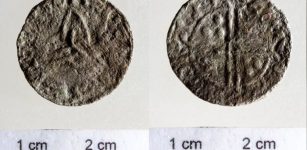 Surprising Discovery Of Ancient Silver Coin Depicting Viking King Harald Hardrada In Hungary
Archaeology | Jun 20, 2022
Surprising Discovery Of Ancient Silver Coin Depicting Viking King Harald Hardrada In Hungary
Archaeology | Jun 20, 2022 -
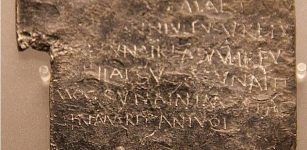 Defixiones: Ancient Roman Curse Tablets Became Big Business
Ancient History Facts | Apr 10, 2016
Defixiones: Ancient Roman Curse Tablets Became Big Business
Ancient History Facts | Apr 10, 2016 -
 Map May Confirm The Legend Of The Mysterious Lost Sunken Welsh Kingdom Of Cantre’r Gwaelod In The Black Book Of Carmarthen
Archaeology | Aug 21, 2022
Map May Confirm The Legend Of The Mysterious Lost Sunken Welsh Kingdom Of Cantre’r Gwaelod In The Black Book Of Carmarthen
Archaeology | Aug 21, 2022 -
 Palnatoke – Founder Of The Jomsvikings Brotherhood, Legendary Danish Hero And Enemy Of King Harald Bluetooth
Historical Figures | Nov 2, 2016
Palnatoke – Founder Of The Jomsvikings Brotherhood, Legendary Danish Hero And Enemy Of King Harald Bluetooth
Historical Figures | Nov 2, 2016 -
 Samurai Swords: Katana And Wakizashi And Their Long Tradition
Ancient Traditions And Customs | Aug 6, 2018
Samurai Swords: Katana And Wakizashi And Their Long Tradition
Ancient Traditions And Customs | Aug 6, 2018 -
 Mysterious Enormous Underground Labyrinth Of Egypt Holds Secrets Kept From The Outside World
Featured Stories | May 29, 2014
Mysterious Enormous Underground Labyrinth Of Egypt Holds Secrets Kept From The Outside World
Featured Stories | May 29, 2014 -
 Abric Romaní Cave: New evidence indicates Neanderthals used to heat water some 60,000 years ago
Human Beginnings | Aug 31, 2015
Abric Romaní Cave: New evidence indicates Neanderthals used to heat water some 60,000 years ago
Human Beginnings | Aug 31, 2015 -
 Vimana Temples – Architectural Marvel Of India
Civilizations | Dec 31, 2018
Vimana Temples – Architectural Marvel Of India
Civilizations | Dec 31, 2018



